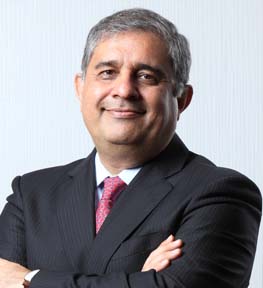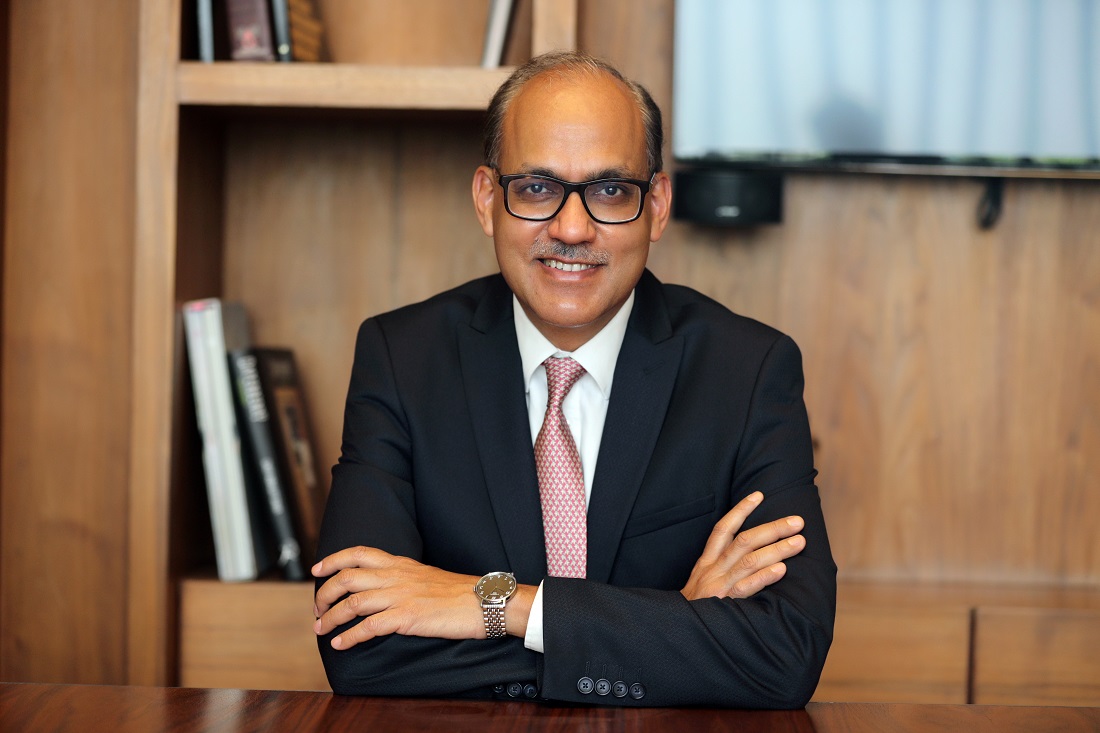BANKS
Why no full-throttle deposit war yet
There are several reasons on why we haven’t had a speedier free-run on bank deposit rates. Will that change in 2023 or the deposit war get subdued?
There are several reasons on why we haven’t had a speedier free-run on bank deposit rates. Will that change in 2023 or the deposit war get subdued?

Despite initial resistance, banks are pushing themselves to a rate war for deposits as credit growth has hit a decadal high and liquidity has started inching towards the zero-corridor zone.
Senior executives have realised that banks need to be strategically placed in a phase of rate-hike cycle that everyone expects to last. Until recently, they were reluctant to put the accelerator on retail deposit rates to handle funding worries even as the Reserve Bank of India (RBI) continued with a monetary tightening policy since May this year to tame rising inflation.
That seems to have changed. The scramble for certificate of deposits (CDs) amid increasing demand for credit couldn’t just go on. Banks needed to pile up deposits by increasing the interest rates paid on them as the cheaper funding avenues from money markets started drying up.
This sudden change in action could be visibly noticed in the case of Axis Bank. Like other banks, the country’s third-largest private lender relied more on the wholesale side of deposits and CDs to support the rising demand for credit. As late as 20 October, Axis Bank managing director and CEO Amitabh Chaudhry indicated in a post-earnings call that the bank had not decisively decided on hiking deposit rates.
“If some tactical move will help us in pushing the growth rate of the overall deposits, we will definitely look at it,” the CEO of Axis Bank told analysts. “Are we doing something of this nature at this point in time? No.”

Chaudhry’s passive stance quickly reversed in two weeks’ time. Axis Bank hiked the interest rate on fixed deposits below Rs 2 crore across multiple tenures, with the maximum being up by 115 basis points. The highest interest rate on offer was 7.25% for senior citizens and 6.50% for the general public on deposits with maturities between three and ten years.
This needle shift on deposit rates wouldn’t be enough. Ten days later, and for the second time in a month, Axis Bank increased rates on fixed deposits again, this time by up to 20 basis points. Interest rate on deposits maturing in 18 months to 3 years climbed to 6.50% from 6.30%. On FDs maturing between 15 and 18 months, the bank hiked the interest rate by 15 basis points to 6.40%. Other FD interest rates were left untouched.
ICICI Bank, India’s second-largest private lender, quickly followed suit. The highest increase was by 30 basis points, across a variety of tenures. On deposits maturing in 2 years 1 day to 3 years, the rate climbed to 6.50%. Similarly, deposits maturing in the period between 15 months to 18 months would earn 6.40% interest rate from 6.10% earlier. For deposits maturing in 3 years 1 day to 5 years, there was a 25% hike in interest rate to 6.60%.
As 2022 was drawing to a close, the fight for deposits would further heat up. With effect from 27 December, Axis Bank offered 7% interest rate for non-senior citizens on fixed deposits maturing between two to 10 years while for the tenures of one year to two years, the rate was lifted to 6.75%. For senior citizens, the top interest rate climbed to 7.75% while below that was revised upwards to 7.50%.
Axis Bank was responding to ICICI Bank’s revised interest rates, which came into effect from 16 December. The second-largest private lender was offering 7% interest rate at the top for non-senior citizens while senior citizens above 60 years were given 7.5%.
In this round of war for deposits, however, there is a marked difference from earlier times. There is an unwillingness among banks to let their deposit rates fly wildly.
“The deposit competition has been more on the bulk side. Of late, there has been a scramble for retail deposits and rates have moved up. But there is no full-throttle war for deposits yet and it should get subdued somewhere in the fiscal fourth-quarter,” State Bank of India (SBI) managing director Ashwini Kumar Tewari told Indianbankingnews.com.

Bank depositors have been complaining of interest rates not jumping higher than inflation. For bigger banks, the best interest rate on deposits below Rs 2 crore for non-senior citizens is 7%. Even HDFC Bank, the country’s largest private sector bank, is offering 7% interest rate on deposits with tenures upwards of 15 months.
The public sector banks are not operating in a far different deposit rate landscape. Most of them, including market leader State Bank of India (SBI) and Bank of Baroda (BoB), are offering below 7% rate of interest on fixed deposits for the general public. SBI’s new interest rate since 13 December is 6.75% at the top, with the highest increase of 65 basis points.
The outliers among the big PSU banks are Union Bank of India, Punjab National Bank (PNB) and Canara Bank. All three are offering the highest rate of 7% and upwards (Union Bank – 7.30% on 800 days and on tenure of 3 years; PNB – 7.25% on 666 days; Canara Bank 7% on 666 days). Like in case of other banks, senior citizens (60 years and above) are offered 50 basis points extra. PNB, however, has created a sub-category among the senior citizens and is offering 8.05% interest to super senior citizens aged above 80 years on deposits maturing in 666 days.
Bank fixed-deposit rates are by and large giving negative returns to the general public when weighed against inflation. This was justifiable when liquidity was in surplus in the Covid era, interest rates were low, credit growth was sluggish and inflation wasn’t a big issue. But why now when all these four factors have reversed?
The puzzle becomes more complex when we realise that deposit growth has been trailing credit growth in a big way. Annual credit growth hit a decade high of 17.95% as of October compared to a five-year average of 9.7%, Reserve Bank of India (RBI) data showed. Deposit growth, on the other hand, stayed near its five-year average of 9.4%. So, how do banks bridge this growth gap?
Besides moderate rate increases, banks have been trying other ways to garner more deposits. A Canara Bank official was on pavements in the outskirts of Mumbai announcing the lender’s deposit plans through a megaphone. The video went viral on Twitter. In a bid to source new depositors, some lenders like Axis Bank have also tied up with mom-and-pop stores.
Banks, however, need to do more as the credit-deposit growth gap continues to linger. As per RBI data, bank credit rose 17.4% year-on-year as on 16 December, compared to a deposit growth of 9.4% during the same period.
In this backdrop, banks need to further raise interest rates so that they can attract deposits that can be funneled into loans at a time when the demand for credit is rising.
Drawing from historical experience, Chaudhry said increase in term deposit rates by a small amount does not have a real impact in terms of the ability to raise more deposits. “The ability to raise more deposits quickly is more on the wholesale side rather than retail side. Retail side is more daily tackling and pushing with the customers - the 5, 10, 15 basis points increase does not really make a huge impact, that's what experience shows,” he told analysts.
So why aren’t fixed deposit rates already racing to mid-7% and 8%? More so, when bank depositors have moved away to other investment avenues, including the stock market. Monthly flows into systematic investment plans (SIPs) surged to an all-time high of Rs 13,307 crore in November. For the first eight months of the current fiscal, the total inflow through SIPs crossed Rs 100,307 crore compared to Rs 1.24 lakh crore for the whole of FY22. In fact, the low interest rates on fixed deposits have kept the stock market buoyant.
Banks need to be concerned about deposit outflows, particularly to the market-linked instruments which are giving better returns. “I don’t see money which has moved to equity and debt markets in pursuit of higher returns coming back to the banks in a big way in the near future. If interest rates further move up, there could be some amount of bank deposit accretion from small savings,” said the treasury head of a private sector bank.
Tewari believes that some amount of money has moved from bank fixed-deposits to the real estate sector. “Initially, money may have migrated from banks to stocks. But now it is probably going to the real estate sector,” he said.
For banks, the one-hand task of lifting deposit rates up to high levels is not a simple option as an anomaly has crept in. Fresh deposits are being sourced by some banks at higher rates than the new loans that are being given out. As this asset-liability mismatch will tend to hurt the profitability of banks, they will need to be cautious on how aggressive they can be on deposit rates. But if they don’t be aggressive, how do they fund the rising demand for loans?
The way out is to re-price loans. But with loan growth pacing up after many years of slumber, banks face competition amongst themselves and do not want to miss the bus on account of pricing. Costlier loans may result in repayment delinquencies and can also slow down the demand for credit.
There are other reasons why we haven’t had a speedier free-run on bank deposit rates. One is banks are sitting on excess statutory liquid (SLR), which they can sell to support credit growth. The other is banks wanting to preserve their net interest margins, which is why they are not keen on offering very high deposit rates.
Pressure on banks from small savings schemes has also been almost absent as their interest rates remained static for close to four years. For the October-December quarter, the government hiked the rates on only three of the schemes by just 10-30 basis points. It is only recently that the government announced an increase in interest rates for the January-March 2023 quarter on eight small savings schemes in the range of 20-110 basis points. With effect from 1 January 2023, the interest rates on small savings schemes will range from 4% to 7.6%. The rate for national savings certificate has been hiked to 7% from 6.8% earlier.
Another restraining factor for banks is the mixed outlook on sustainability of credit growth, particularly in the backdrop of prospective recession in many advanced economies, high inflation and the unending war in Ukraine. In India, the loan growth so far has been largely led by working capital and demand for retail loans. Credit rating agency Crisil expects credit to grow at 15% year-on-year in FY23 and FY24 due to a broad-based recovery in the economy and cleaner balance sheets of banks. But global headwinds can play spoilsport and slow down growth, though India is likely to escape recession.
In the midst of tightening liquidity, banks have been funding the growing loan demand through many avenues, including short-term borrowings. As per RBI data, borrowings by banks rose to Rs 5.49 trillion as on 21 October, from Rs 2.74 trillion as on 25 March, 2022. These included interbank repo operations and issuance of instruments such as additional tier-1 bonds.
CDs, which are excluded from this, also were utilised as liquidity surplus in the banking system shrunk from Rs 7-8 trillion in April 2022 to around Rs 1.35 trillion in October with the RBI engaged in fighting inflation and shielding the rupee from weakening against the dollar. The outstanding CDs stood at Rs 2.41 lakh crore on 21 October compared to just Rs 0.57 lakh crore a year ago.
But as yields rise with the RBI increasing the policy interest rate since May by 225 basis points to 6.25% , there is a shift in demand from bond markets to bank loans. Even selling surplus SLR securities at this stage will mean booking mark-to-market (MTM) losses. For banks, the action has to move to the deposit side.
With borrowing from money markets becoming costlier, banks carry risks if they tend to be aggressive on credit while deposit growth lags behind. In a meeting between RBI officials and heads of public and private sector banks, there was an indication that banks need to be cautious on credit growth. Among others, the issues discussed related to credit-deposit growth gap, asset quality, investments in IT infrastructure and adoption of new-age technology solutions.
“Das advised the banks to remain watchful of the evolving macroeconomic situation, including global spillovers, and take mitigating measures proactively so that the potential impact on their balance sheets is minimised and financial stability risks are contained,” RBI said in a statement following the meeting ahead of the 7 December monetary policy.
How far will fixed-deposit rates climb? “Deposit rates should peak by Q4,” said Union Bank of India executive director Rajneesh Karnatak. “There may be some marginal hikes from then on, depending on the RBI’s future repo rate increases. The sense is that interest rates on fixed deposits shouldn’t climb too high from now on.”
After ignoring it for the last couple of years since the outbreak of Covid-19, banks will now have to pay attention to liquidity management. Some bankers see fixed-deposit interest rates rising faster than the re-pricing of loans.
“This is how the asset-liability mismatch will have to get addressed in the next 2-3 quarters. Credit growth will slow from almost 18% and deposit growth will speed up from 9% levels. We will see the two converging at 13-14% within the next two quarters,” the treasury head of a leading public sector bank said.
There is a view, though, that the gap between loan and deposit growth would continue. “We may see better interest rates on bank fixed deposits going forward because of liquidity issues in the market. But will this bridge the gap between credit and deposit growth? I don’t think so. There will be some narrowing but the asset-liability mismatch will continue for some time,” said the treasury head of a leading private sector bank.
The bottom line is that banks will have to garner more deposits and they can do this by upping interest rates. A full-throttle deposit war is on the horizon only if credit keeps growing at a faster pace.
